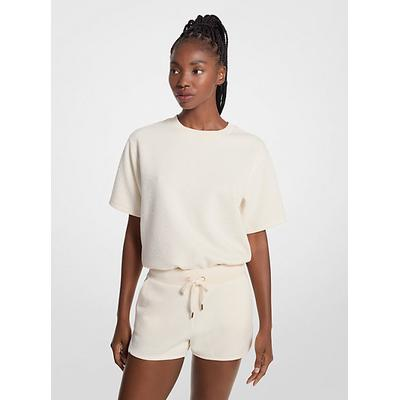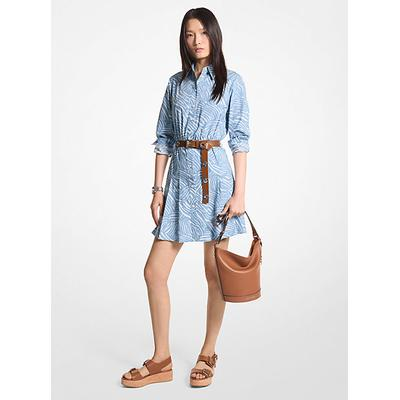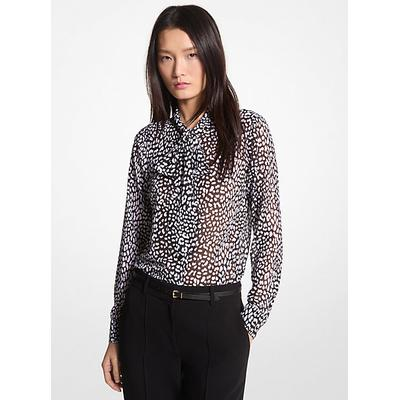Hey Diva dressing fans! When the items we love coincide with brands we work with, Diva dressing will use Paid Links in our articles. If you decide to click on these links and purchase the product, we get a small commission. Our Opinions Are Our Own, but we do add Paid Links as a way to offer these products at no added cost to our readers. Want to know more? Click Here to check out our Terms of Use anytime!
Fast fashion industry has transformed how we consume clothing, making trendy, affordable clothes available at breakneck speeds. While this accessibility has democratized fashion, it comes with a heavy environmental and social cost. Fast fashion’s rapid production cycles and emphasis on low prices have fueled unsustainable practices, leading to waste, pollution, and poor working conditions for garment workers. In contrast, a shift toward choosing quality over quantity in clothing can help mitigate these negative impacts.
Fast fashion refers to the quick production of inexpensive clothing that mimics current trends. Brands like Zara, H&M, and Shein are known for releasing new collections weekly or even daily, encouraging consumers to buy more frequently at low prices. This model capitalizes on demand for affordable and fashionable clothing but often at the expense of quality, ethics, and sustainability.
Negative Impact of Fast Fashion
While fast fashion has made clothing more accessible, its environmental, social, and economic consequences are far-reaching.
Environmental Damage
The fast fashion industry is one of the largest contributors to environmental degradation due to the sheer volume of clothing produced and discarded.
- High Water Usage: Producing textiles, especially cotton, requires immense amounts of water. For example, it takes about 2,700 liters of water to produce a single cotton t-shirt. In regions where water is scarce, this can exacerbate local water crises.
- Pollution from Dyeing and Processing: Toxic chemicals used in textile dyeing and finishing often end up in rivers and oceans, contaminating water supplies and harming aquatic ecosystems. The fashion industry is responsible for about 20% of global wastewater.
- Textile Waste: Fast fashion encourages overconsumption, resulting in massive amounts of clothing waste. Globally, over 92 million tons of textile waste are discarded annually, with most of it ending up in landfills or incinerated.
- Microplastics: Many fast fashion garments are made from synthetic fibers like polyester, which release microplastics into the environment during washing. These tiny plastic particles eventually enter the food chain, posing risks to marine life and human health.
Poor Labor Conditions
The fast fashion business model relies on producing garments quickly and cheaply, which often means outsourcing production to countries where labor is inexpensive. Unfortunately, this often results in exploitative labor practices.
- Low Wages and Long Hours: Garment workers in developing countries are often paid extremely low wages, far below a living wage, and are subjected to unsafe working conditions. Workers may face long hours, harassment, and little to no job security.
- Factory Disasters: The 2013 collapse of the Rana Plaza factory in Bangladesh, which killed over 1,100 workers, highlighted the unsafe conditions prevalent in many fast fashion factories. Despite global outrage, unsafe working environments continue to be a problem.
- Child Labor: In some instances, child labor is used to meet the fast fashion industry’s high demand for cheap labor, further highlighting the ethical issues tied to this sector.
Overconsumption and Disposable Culture
Fast fashion encourages a “buy now, discard later” mentality, promoting overconsumption and creating a culture where clothing is seen as disposable. This leads to:
- Shorter Product Lifecycles: Fast fashion garments are often poorly made, leading to faster wear and tear. As a result, consumers buy more often to replace worn-out clothes, fueling a cycle of waste.
- Impulse Buying: The constant release of new collections encourages impulse buying, where consumers purchase items, they don’t need or won’t wear often. Many items are discarded after only a few wears.
Why Quality Over Quantity Matters
As the negative impacts of fast fashion become more apparent, more consumers are adopting a “quality over quantity” mindset when it comes to clothing. Here’s why investing in quality, sustainable clothing is the better choice:
Durability and Longevity
Quality clothing is designed to last. Higher-quality fabrics, construction techniques, and attention to detail result in garments that withstand wear and tear over time.
- Fewer Replacements: When you invest in well-made pieces, they last longer, reducing the need for frequent replacements. This not only saves you money in the long run but also reduces your environmental footprint.
- Timeless Style: Quality clothing often focuses on classic, timeless designs that can be worn year after year, regardless of fleeting trends.
Sustainability
Choosing quality over quantity directly supports sustainability by reducing waste and conserving resources.
- Lower Waste Production: When you buy fewer, better-made clothes, you contribute less to the overall waste generated by the fashion industry. Sustainable clothing brands often produce items in smaller quantities, helping to minimize overproduction and textile waste.
- Ethical Production Practices: Many high-quality brands prioritize ethical manufacturing, ensuring that workers are paid fair wages and work in safe conditions. By choosing quality items from ethical brands, you are supporting fair labor practices and sustainable production.
Reduced Environmental Impact
Quality clothing, particularly when made from sustainable materials, has a lower environmental impact compared to fast fashion.
- Sustainable Materials: Many quality clothing brands use eco-friendly fabrics like organic cotton, hemp, Tencel, or recycled materials. These fabrics require fewer resources to produce and are often biodegradable, reducing their long-term environmental impact.
- Lower Carbon Footprint: Because high-quality garments are produced in smaller quantities and designed to last, they often result in fewer carbon emissions compared to the mass production methods used in fast fashion.
Better Fit and Comfort
Quality clothing is often better tailored and made with more comfortable materials, resulting in a better fit and feel.
- Custom Fit and Tailoring: High-quality brands often focus on fit and design, ensuring that garments are made to fit properly and flatter different body types. Many high-end or sustainable brands offer custom sizing or tailoring services.
- Comfortable Fabrics: Natural fabrics and well-made garments are generally more comfortable to wear. They allow your skin to breathe better than synthetics, especially during hot weather, and can feel more luxurious.
Emotional and Financial Investment
When you invest in quality clothing, you’re more likely to take better care of your garments, fostering a deeper connection to your wardrobe.
- Mindful Consumption: When you spend more on a well-made item, you tend to value it more. This encourages mindful consumption, leading to fewer impulsive purchases and a more curated wardrobe.
- Cost-Per-Wear: Quality items may have a higher upfront cost, but they offer better cost-per-wear. A durable jacket that lasts for years will cost less in the long run than a cheaper alternative that needs frequent replacements.
How to Shift Toward Quality Over Quantity
Making the shift toward a more sustainable wardrobe may seem daunting at first, but it’s easier than you think. Here’s how you can start prioritizing quality over quantity:
Invest in Timeless Staples
Build your wardrobe around versatile, timeless pieces that you can wear across seasons and occasions. A well-fitted blazer, quality denim, and classic black dresses are examples of items that never go out of style.
Choose Sustainable and Ethical Brands
Research brands that prioritize sustainability, fair labor practices, and high-quality materials. These brands often use eco-friendly production methods and ethically source their materials.
Embrace Secondhand Shopping
Thrift stores, consignment shops, and online platforms like Poshmark and Depop offer quality clothing at lower prices. Shopping secondhand reduces the demand for new production and gives pre-loved items a new life.
Take Care of Your Clothes
Proper care extends the life of your clothing. Wash your clothes less frequently, use gentle detergents, and avoid high heat drying to maintain fabric integrity. Learning to mend minor damages like loose buttons or small tears will also help your clothes last longer.
Opt for Capsule Wardrobes
A capsule wardrobe consists of a limited number of high-quality, interchangeable pieces that you love and wear often. By curating your wardrobe this way, you reduce clutter, avoid impulse buying, and focus on quality over quantity.
Here are some products that can help
Michael Kors Logo Jacquard Knit Short-Sleeve Sweatshirt $59.00

Michael Kors Zebra Print Stretch Cotton Poplin Shirtdress $59.40

Michael Kors Graphic Leopard Print Georgette Tie $60.00

Michael Kors Watch Hunger Stop Organic Cotton Unisex T-Shirt $40.00

Michael Kors Logo Aviator Print Organic Cotton T-Shirt $39.00



